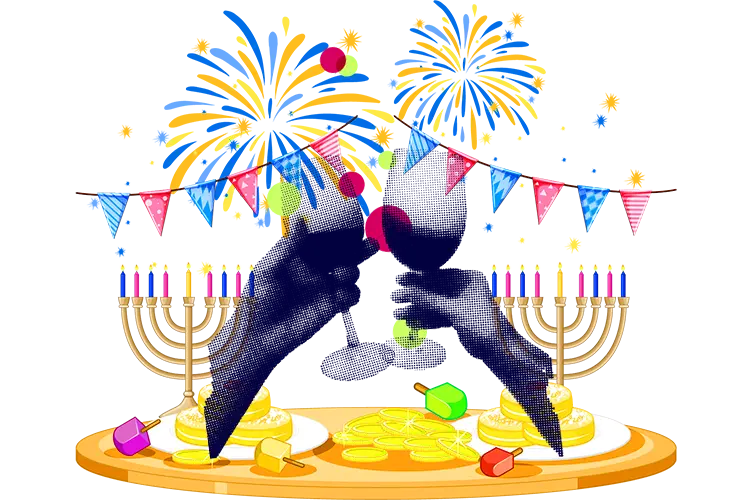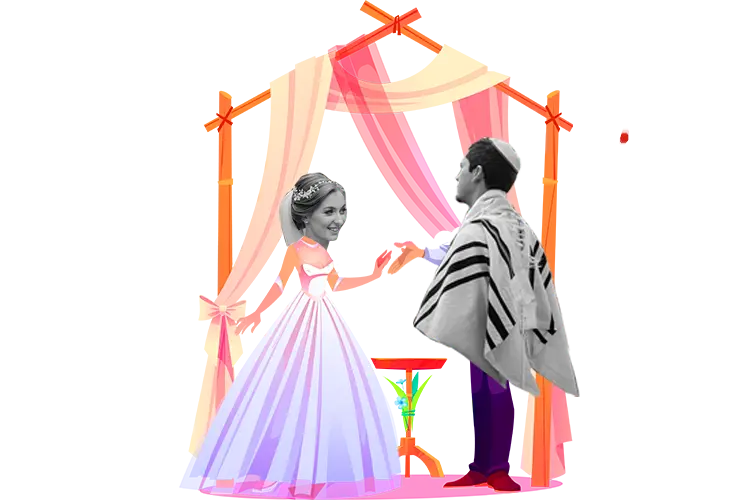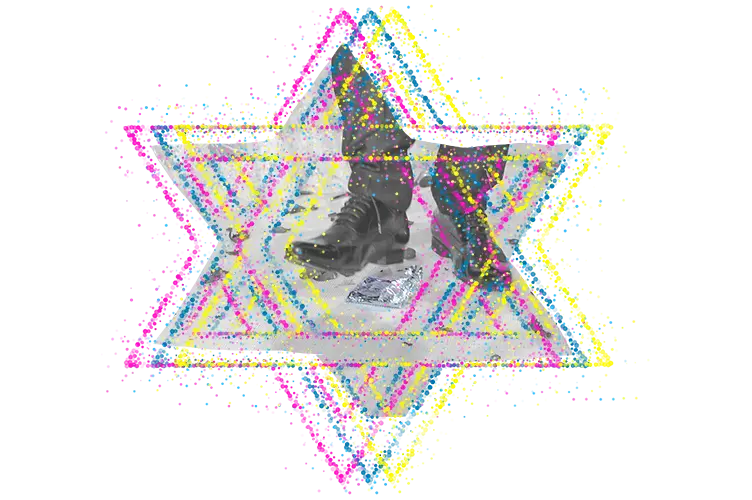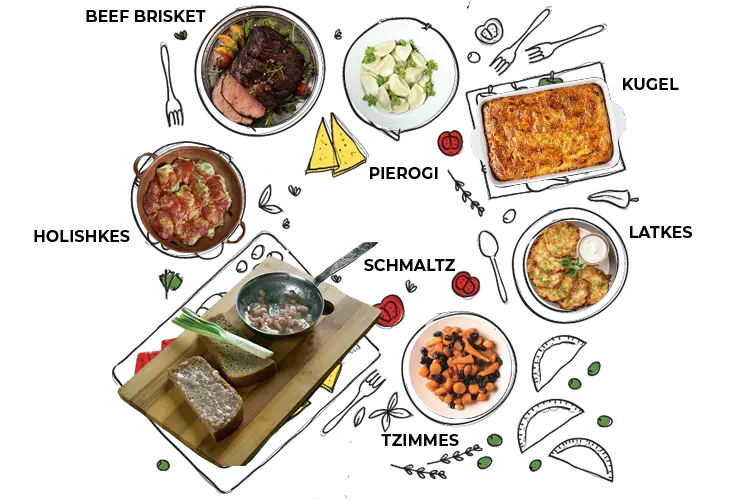
If you’re planning to honor your Jewish roots and incorporate Jewish wedding ceremony traditions into your big day, there’s a lot of ground to cover.
For starters, the Jewish wedding ceremony is quite unlike traditional Western weddings and follows a defined path full of rituals, customs, and of course, Jewish law dating back as far as 3,800 years.
A Jewish wedding will also look different depending on your Jewish subculture, such as Sephardic or Ashkenazi, or whether or not you’re orthodox, reformist, or conservative.
However, many Jewish wedding traditions are commonly practiced among most Jews, no matter how strictly or closely you follow the religion.
If you’re excited to plan your own traditional Jewish wedding ceremony, here’s what you need to know.
Jewish tradition dictates that the bride and groom do not see each other during the week leading up to the ceremony. This is to increase the longing and yearning they have for one another, which in turn, increases their joy when they do, at last, meet again.
Beyond this, several other traditions apply to the days leading up to the wedding ceremony .
The aufruf is a pre-wedding religious ceremony that takes place on the Saturday before the actual wedding ceremony. During this event, the rabbi bestows blessings upon the engaged couple as they recite from the Torah.
Afterward, candy is thrown at the couple to symbolize a sweet life, and a small reception may also take place.

It’s commonplace for a Jewish couple to fast before their wedding to purify themselves before marriage. The pre-wedding fast typically begins at sundown the day before the wedding, and the fast breaks with the first glass of wine the couple consumes during the marriage ceremony.
The ketubah is essentially a marriage contract that outlines the following:
Importantly, this is not a religious document. Instead, it is part of Jewish law. The couple, rabbi, and two witnesses all sign the ketubah, although some Orthodox communities require only the groom to sign the document.
The signing takes place before the wedding, and then someone reads the document aloud during the ceremony.
Bedeken is an important part of Jewish wedding tradition.
In this tradition, right before the wedding ceremony, the groom visits the bride, and the couple see one another for the first time since their pre-wedding parting. Then, the groom places a veil over the bride’s face.
The ritual symbolizes the groom’s love for his bride’s inner beauty. The tradition is based on the biblical story of Jacob, who was tricked into marrying the wrong woman because he did not see his bride’s unveiled face before the ceremony.
At the start of the wedding ceremony, the Jewish wedding procession takes place; however, this procession differs from what you’ll see in Western weddings. Both the groom’s parents walk down the aisle with him. Then, the bride follows with both her parents. The bride and groom meet under the “chuppah” or wedding canopy.
The chuppah consists of an overhead covering with four corners representing the home the newlyweds will build together. Sometimes, the four corners will be held up by family members as the ceremony takes place; other times, it’s a freestanding structure.
So what happens once the ceremony gets started?

During very traditional Jewish weddings, after the bride and groom meet under the chuppah, the couple will walk around one another in a series of circles.
Traditionally, the bride circles the groom seven times. However, many modern couples prefer to share this ritual, with the bride circling the groom three times and then vice versa. The bride and groom then perform the seventh circle together.
Next, the betrothal ceremony or “kiddushin” takes place. Here, the rabbi gives a blessing while the couple sips from a cup of wine. Afterward, they exchange rings. The groom recites an Aramaic phrase as he places the ring on his bride’s right index finger.
If the groom is also receiving a ring, the bride will also recite an Aramaic phrase while placing the ring on the groom’s finger. Note that, in some orthodox cultures, a double ring ceremony does not take place.
Sheve b’rachot means “seven blessings.” Family members read these blessings aloud in both English and Hebrew.
During the seven blessings, the couple shares wine beneath a prayer shawl.

Now for what’s probably the most famous Jewish wedding tradition: the breaking of the glass. This tradition acts as a reminder of the destruction of the Temple in Jerusalem. It also represents the fragility of relationships and the dedication and commitment they require.
Once the glass shatters, the congregation shouts “Mazel tov!” meaning “good fortune.”
Many Jewish couples keep the broken shards of glass and have them made into a keepsake to remind them of their special day.
Finally, the newly wedded couple receives a moment of privacy or “seclusion” away from the wedding party. This tradition requires the couple to stay alone together in a private room for at least eight minutes, though longer is fine. Sometimes they share a meal, but, historically, the couple also consummates their new marriage. (You may, or may not, be pleased to hear that this is no longer the requirement!)

The hora is one of the best rituals to take place during the Jewish wedding reception. The crowd lifts the bride and groom up on chairs, while the crowd dances and sings “Hava Nagila.”

The Jewish wedding feast is always greatly anticipated and nearly always includes chicken and fish, as both are symbols of fertility. The meal starts with a blessing over a loaf of challah, a braided bread representing love. Since most Jewish weddings tend to be Kosher, you will not find dairy or meat served together, nor will any pork or shellfish be present.
Popular Jewish wedding foods include:
The final ritual of the Jewish wedding day is the “birkat hamazon.” This is a blessing that takes place after the feast has ended.
Wedding guests repeat the seven blessings, and the newlyweds share a cup of wine.
The breaking of glass during a Jewish wedding ceremony represents two things. First, it is a reminder of the destruction of the Temple in Jerusalem. Second, it symbolizes the fragility of relationships.
There is no set amount of money required for a gift at a Jewish wedding. However, any amount given should be in multiples of 18 as this number represents “chai,” meaning “life” in Hebrew.
Jewish tradition dictates that the bride and groom do not see each other for the entire week preceding the wedding. The Saturday before the wedding, the aufruf will take place — a religious pre-wedding service wherein the rabbi blesses the couple.
Orthodox Jews wear wedding rings. While both the bride and groom will have a wedding band, only the bride has a ring placed on her finger during the wedding ceremony. After marriage, both wear their rings on the index fingers of their right hands.
A Jewish wedding can take place on Saturday night after the Havdalah has taken place to mark the end of Shabbat. More commonly, however, Jewish weddings take place on Sundays.
As you can see, there are plenty of Jewish wedding traditions to consider adding to your own wedding. Whether the religious aspect plays an important role in your life, or you prefer non-religious customs, there’s something for everyone to incorporate as a nod to their Jewish heritage.
For more wedding insight and ideas, TheGroomClub has it all. We’ve got all the from survival guides to what to write in a wedding card, to tips and hacks you need to make life as a groom — and wedding planning — less stressful and a lot more enjoyable.